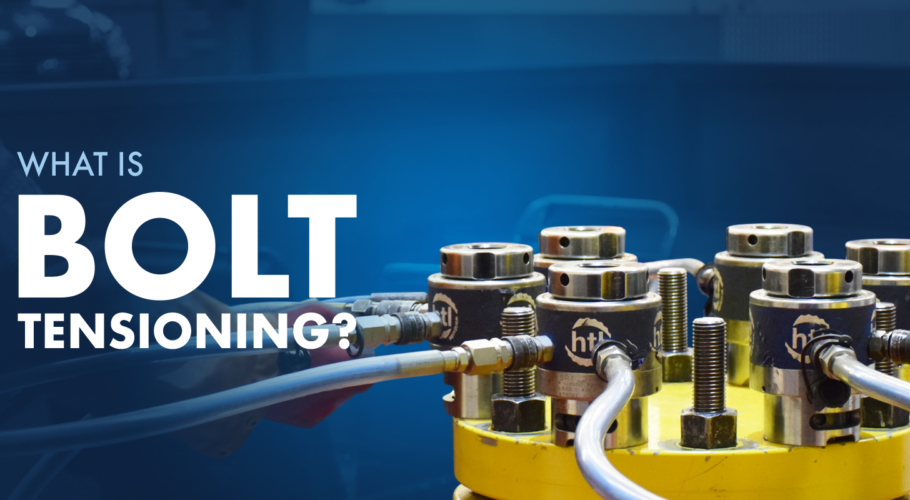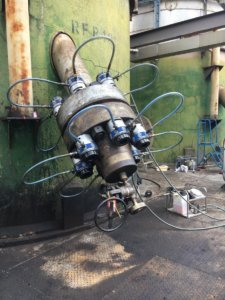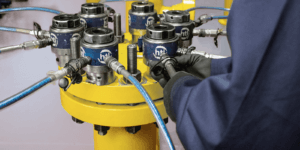
When bolt tensioning, the bolt is preloaded and stretched during the process. When this has been completed correctly, with the nut tightened and the tensioner load removed, the bolt will automatically want to return to its original length. It is this spring-like action that creates tension and results in a clamping force across the bolted application
As bolted joints are often one of the most common elements in industrial components, the reliability of each joint is of the utmost importance. Over the years, HTL has developed accurate means of measuring and applying force to joints consistently.
Tensioners are regularly utilised for flange maintenance, providing the user with flexibility for leak-free operations and easy maintenance, critical components to any start-up projects in sectors such as petrochemical.
There are several benefits to using tensioning equipment, not only does it increase efficiency across industries where time constraints are typical, but safety is emphasised by mitigating the number of pinch points and removing the difficulties in finding a reaction point. Tensioners are also hands-free during pressurisation.
The consistency of bolted joints is crucial when dealing with joint integrity as any inconsistencies can alter or damage a bolting application, resulting in joint failures, safety issues and costly downtime.
Tensioning tools also help to speed up operations as they can be used simultaneously, meaning multiple tools can be actuated at the same time and achieve the same load in each bolt by using a ‘daisy chain’ technique that connects all tensioners, as seen below.

Also, as tensioning is not affected by friction, there is no need to lubricate studs, meaning that you can save time on your application and move straight on to operations without the need for this step.
Industry recognised training standards, such as those provided by the ECITB, have been developed to ensure that operators and technicians around the world are competent in safely operating tensioning equipment without compromising the integrity of the joint.
Training delegates can take advantage of the following course offerings from HTL Training Services to learn the tensioning techniques used in a variety of industries.

HTL Group has led the way in being bolting product specialists, offering tensioning tools, such as Topside and Subsea Bolt Tensioners, as well as Wind Tensioners, that are designed to provide the most innovative bolting tools on the market. Accompanied by a full suite of tensioning techniques training, HTL provides you with a combination of the right tool and skill set for tensioning operations.